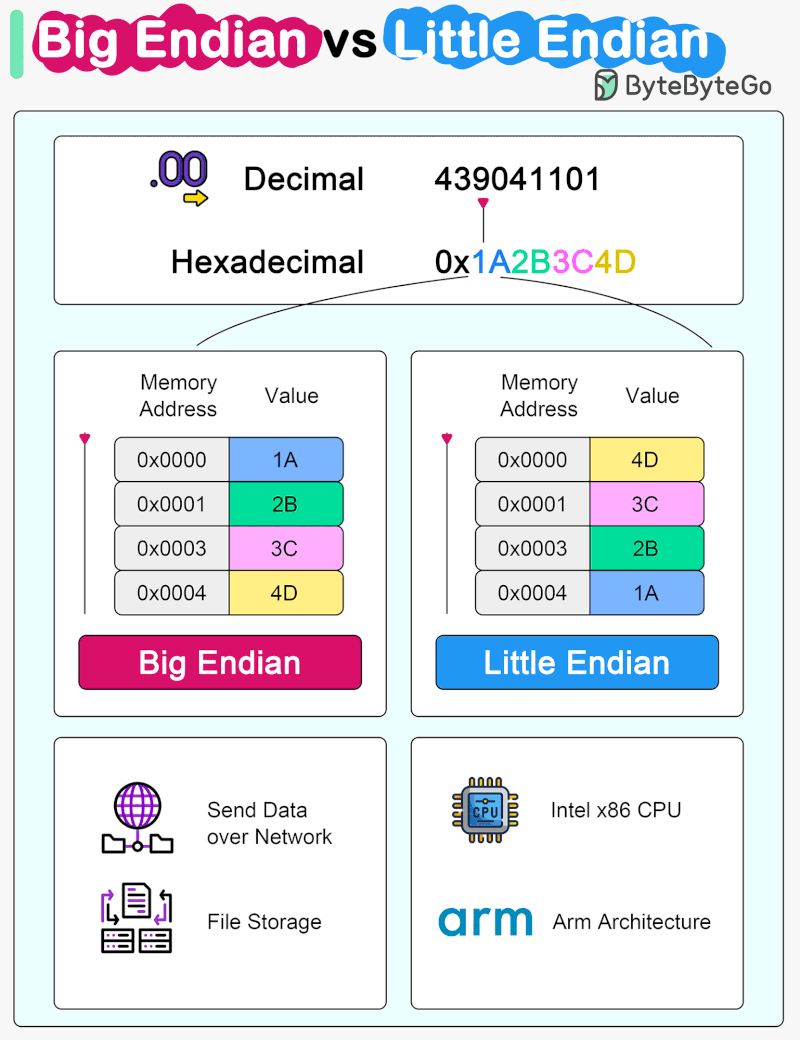Big-Endian and Little-Endian
Difference

A bytebytego interpretation of this concept
Little-endian and big-endian refer to how computers store and read multi-byte numbers (like 32-bit or 64-bit integers) in memory. When computers need to share data, especially across different types of systems, they need to agree on how the bytes are arranged. If they use different endian formats, they might misinterpret the data, so conversion may be necessary.
Little-Endian?
Think of it like writing a number from left to right, where the smallest part comes first. In little-endian, the little (least significant) part of the number is stored in the memory's first slot. Example: For the number 0x12345678, little-endian storage in memory would be 78 56 34 12.
Big-Endian?
Imagine writing a number from right to left, with the biggest part first. In big-endian, the big (most significant) part of the number is stored in the memory's first slot. Example: For the number 0x12345678, big-endian storage in memory would be 12 34 56 78.
Importance
It's mostly a technical detail based on how computer architecture is designed. Different computer systems might use different endian formats. For example, many PCs (like those with Intel processors) use little-endian, while some older systems use big-endian.